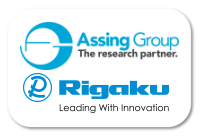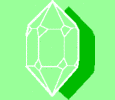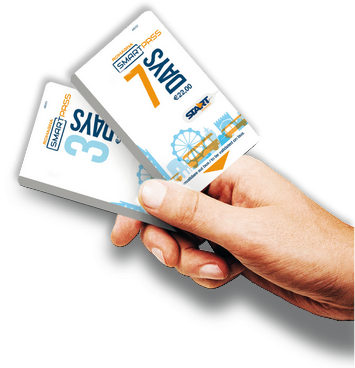Monday 12 September 2016 (14.00-15.15)
Room - Tempio 2
 |
14.00-14.30 (ZEISS) Graham S.D., Hil E.* & Wittge J. : GEOSCIENCE EDUCATION IN A DIGITAL WORLD WITH DIGITAL MICROSCOPY |
 |
14.30-14.45 (PerkinElmer) Baccolo G., Clemenza M.*, Delmonte B. & Magarini R. : SOLUBLE AND INSOLUBLE ELEMENTAL CONTENT IN ANTARCTIC ICE CORES: NEW ADVANCES USING A NEW GENERATION ICP-MS |
 |
14.45-15.00 (Bruker) Wittkopp A.*: ADVANCED MINERAL IDENTIFICATION AND CHARACTERISATION BY MICRO-XRF |
 |
15.00-15.15 (Panalytical) |
Monday 12 September 2016 (15.45-16.30)
Room - Tempio 2
 |
15.45-16.00 (Assing/Rigaku) |
 |
16.00-16.15 (Agilent) |
 |
16.15-16.30 (Horiba) |
 |
16.30-16.45 (xplorex) Kinneging A.J.*, Verbruggen R. & Huber N.: THE PLANET. A PORTABLE, HIGH-RESOLUTION XRPD |
 |
16.45-17.00 (SOGIN) Chiaravalli F., Uras S. & Ventura G.* : THE ITALIAN NATIONAL REPOSITORY FOR DISPOSAL OF RADIOACTIVE WASTES: LEARNING FROM THE DURABILITY OF ARCHAEOLOGICAL ANALOGUES OF MODERN BUILDING MATERIALS |
The petrological and geochemical interrogation of mantle diamonds and their inclusions provide the best empirical method to study the deep carbon cycle over geological time. But what do diamonds teach us about the history of the mantle? About the crust to the deep mantle interaction over time? However, it is not known if the present models of formation are all correct, if some are mutually-exclusive, or if some are simply wrong. For example, it is agreed that diamonds are metasomatic, but the specific nature of these fluids are still debatable. In this session we propose to address what we know, and what we need to know about diamond-formation in the mantle and the cycling of volatiles throughout the Earth. We welcome all petrological, geochemical, experimental, and theoretical contributions.
Costanza Bonadiman, Carsten Munker, Helen Williams, Marguerite Godard, Othmar Müntener and Alberto Zanetti (contact: bdc@unife.it)
Geochemical differentiation processes have defined both the chemical composition and physical properties of the Earth’s interior from accretion to the present day. Processes such as melt extraction and the tectonic recycling of surface material and the mixing and long-term preservation of chemical heterogeneities require a fundamental understanding of the chemical and physical properties of mantle components and how these have changed over time. We encourage geochemists, petrologists, geophysics and mineralogists to contribute to this session to build a dynamical understanding of the secular variations in mantle chemistry, mineralogy and physical properties.
Volatile elements play a key role in many major Earth processes including convection, plate tectonics and volcanism. This session aims to gather researchers investigating all aspects of the deep cycling of volatiles (hydrogen, carbon, sulphur, nitrogen, noble gases, halogens), using experimental, field-based or computational approaches. This may include analytical developments, the study of volatile speciation, abundance and solubility in minerals, fluids or melts, the investigation of volatile mobility and their fluxes between different reservoirs. We also encourage contributions dealing with the effects of volatiles on mineral, rock and magma properties and their interaction with the redox state of the interior. Studies on the origin of terrestrial volatiles and their implications for Earth’s large-scale geodynamic processes are also welcome.
The Keynote speaker will be Nathalie Bolfan-Casanova (CNRS, Université Clermont-Ferrand, France)
Olivier Beyssac, Marie Edmonds, Jörg Hermann and Timm John (contact: olivier.beyssac@upmc.fr)
Subduction zones are active geodynamic environments enabling crustal recycing into the mantle and generating new continental crust. Of particular importance is the slab-mantle wedge system at 40-200 km depth. It is increasingly recognized that subduction materials are modified in this region by metamorphism, metasomatism and mechanical mixing with vast implications for the physico-chemical state of subduction zones.
Complexation in C-O-H-S fluids and mineral transformations involving hydrous silicates, carbonates, sulfides, graphitic carbon and/or diamond govern mass transfer in the fore- and sub-arc region of slab-mantle interface. Dissolution, oxidation/reduction, melting, and reactive percolation account for the variety of metasomatized rocks forming in the slab and in the mantle wedge, source for the magmatism.
Fluids, melts and rocks derived from subducting lithosphere interact with depleted mantle in a region of strong chemical and physical gradients. These interactions mediate planetary-scale volatile cycling, produce arc magmas and continental crust and yield modified subducted lithosphere and mantle-wedge peridotites whose chemical signals may persist in the deep Earth for billions of years.
The Keynote speakers will be Rajdeep Dasgupta (Rice University, USA) and Oliver Plümper (University of Utrecht, The Netherlands)
Contributing Societies


























